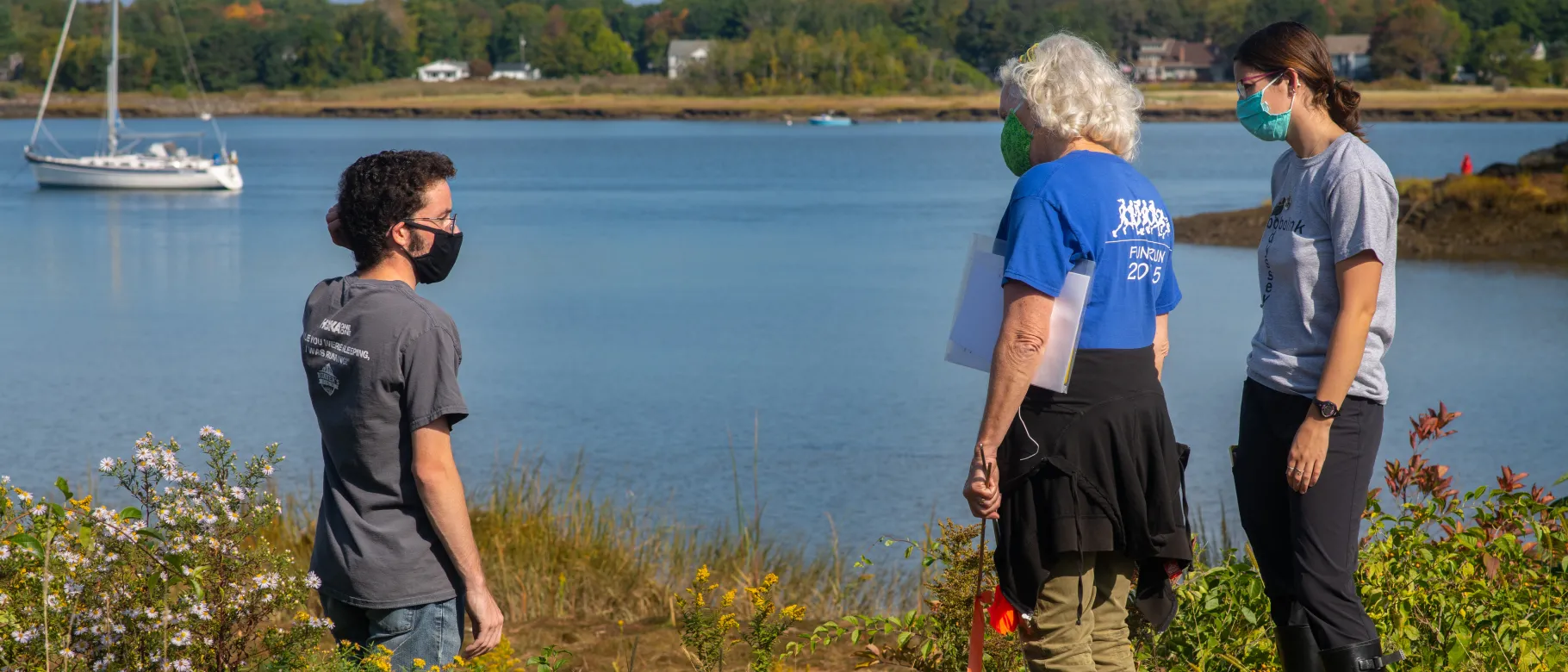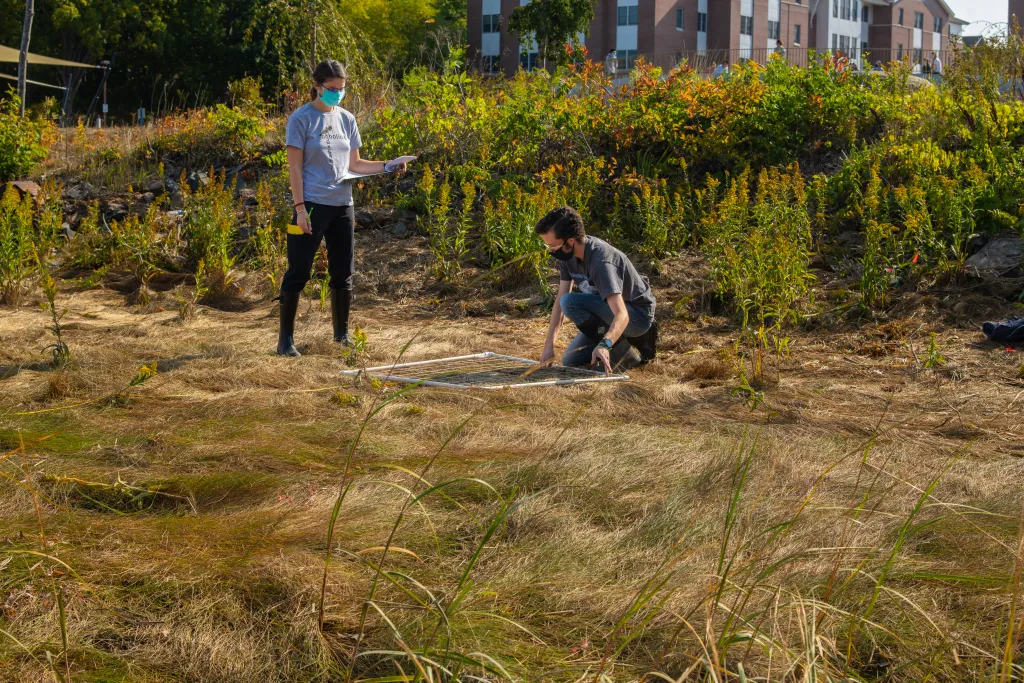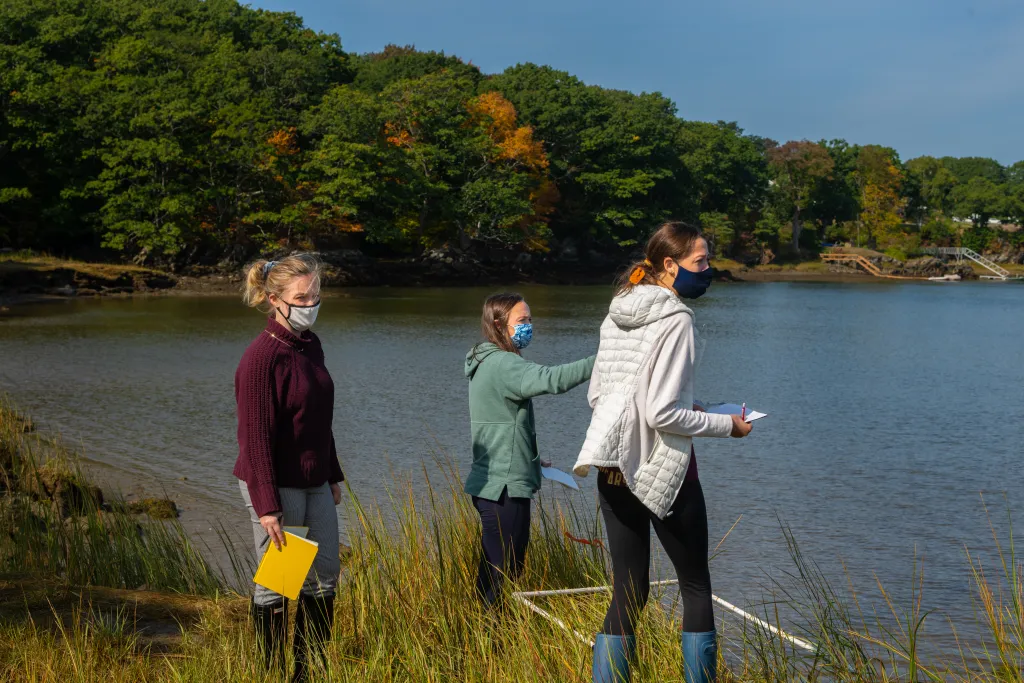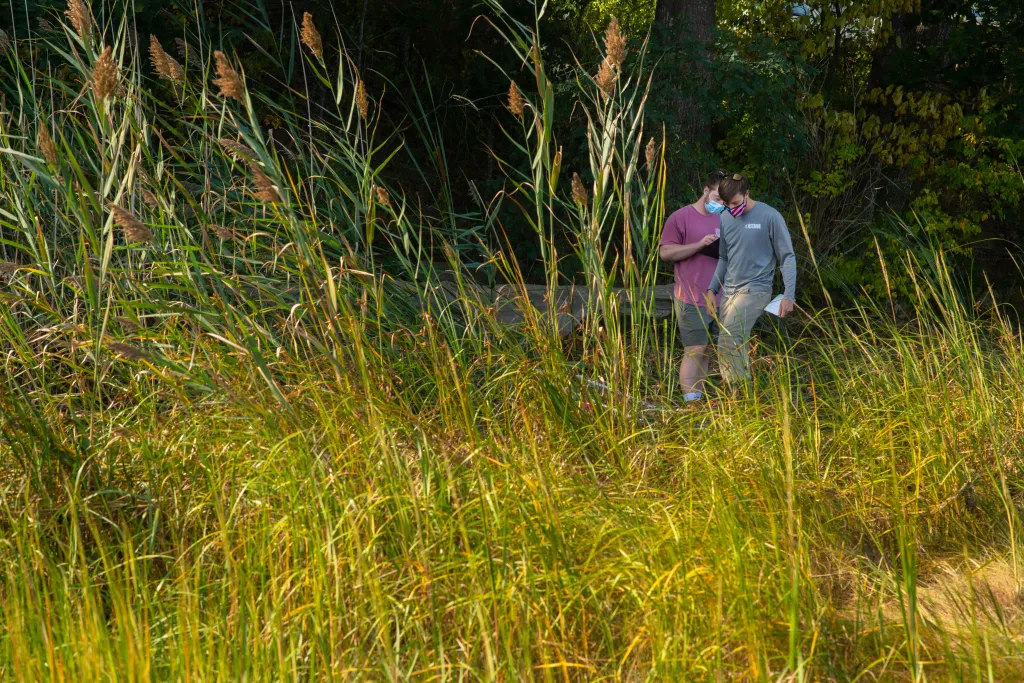Building sustainable shorelines that withstand the tides
Students and faculty laying the groundwork for a living shoreline at UNE

The shorelines of Maine’s jagged coast accomplish far more than meet the eye.
They are not just beautiful to look at. Shorelines quell the violence of storms, and they provide habitat for hundreds of living things — plant, avian, and aquatic. And they, like many other habitats, are under threat due to climate change, which brings higher seas and larger, more frequent storms that erode and weaken the foundation of our coasts.
A class at the University of New England, taught by Pam Morgan, Ph.D., professor of environmental studies, is looking at ways of preserving the shorelines along the University’s coastal Biddeford Campus in an effort to mitigate erosion and save the shore’s marine ecosystems.
This year, the class, Gulf of Maine Field Studies, is focusing on exploring the possibility of constructing one or more living shorelines on campus. Living, “green” shorelines aim to utilize plants or other natural elements to stabilize endangered coastlines. They are preferred over harder, “gray” shoreline structures like bulkheads and rock revetments, which decrease shoreline biodiversity and can actually contribute to erosion of the sea floor.
Morgan said a living shoreline will help protect UNE’s campus from coastal erosion while protecting the plants and animals that students utilize in their environmental and marine classes and research — organisms that have called Saco Bay home long before the University was ever established.
“We can already see the salt marshes and the banks behind them eroding,” Morgan said. “These marshes provide important habitat for fish and birds, including the great blue herons and kingfishers that we see in the marshes every day.”
This fall, students in Morgan’s class are spending their time out on the shores of the Saco River near Jordan Point. There, they are gathering baseline information about the shoreline’s existing conditions. The work includes performing bank instability assessments, evaluating the salt marsh structure and function, assessing the marshes’ vulnerability to erosion, and identifying the flora and fauna of the area. They are also meeting with professionals who have experience in living shoreline projects.
The work is valuable for students hoping to gain real-world conservation experience through field work, like fourth-year student Mitch Hennings (Environmental Science, ’21), of Plymouth, Massachusetts.
“I've grown to get really interested in salt marsh work and conservation and working in wetlands,” said Hennings, who originally studied history but found passion for the environmental field. “I think what I want to do with my degree is work for a consulting group, perhaps, to do restoration work and protect these areas. And that's just what we're trying to do here.”
The class is one of the ways in which UNE encourages and prepares students to take on the pressing needs of today; in the spring, students will shift their focus to gathering input from stakeholders at the University, state, and local level and prepare to write a grant proposal to fund construction of a living shoreline.
The larger goal of the course, Morgan said, is to help students tackle the complex problems related to climate change through projects situated in the local community.
“The skills and knowledge students gain in the class empower them to make positive change wherever they go,” Morgan stated.



Climate change is an increasing environmental concern, particularly in the Gulf of Maine. The Gulf is warming faster than 99% of the world’s oceans and driving flooding and erosion the likes of which have never before been seen in Maine. It increasingly threatens Maine’s lobster economy, and it drives harmful invasive species to the state’s waters.
UNE's Office of Communications documented the ongoing climate crisis in its recent production, "Reckoning With Climate Change in the Gulf of Maine."
The climate change-induced environmental degradation is what prompted Nicole Corriveau (Environmental Science, ’22) to leave her hometown of Colchester, Vermont, and study at UNE.
“My interest in environmental science was piqued by the growing issue of climate change and how that's affecting ecosystems all around us,” she said. “And even after just a couple weeks of being out here on the shoreline, we can already see signs of past erosion that have taken place.”
Emma Burke (Environmental Studies, ’22), another of Morgan’s students, said that, as a lover of nature, she wants to do her part to preserve it. A Cape Cod native, Burke understands both the beauty and the fragility of marshy coastlines.
“We all live on the same planet, and I think that it’s important to do any little thing you can to protect it,” Burke said. “So, if that means just rebuilding up a small marsh to help the animals that live there, then that's a great thing to do.”
Watch UNE's documentary, "Reckoning with Climate Change in the Gulf of Maine."